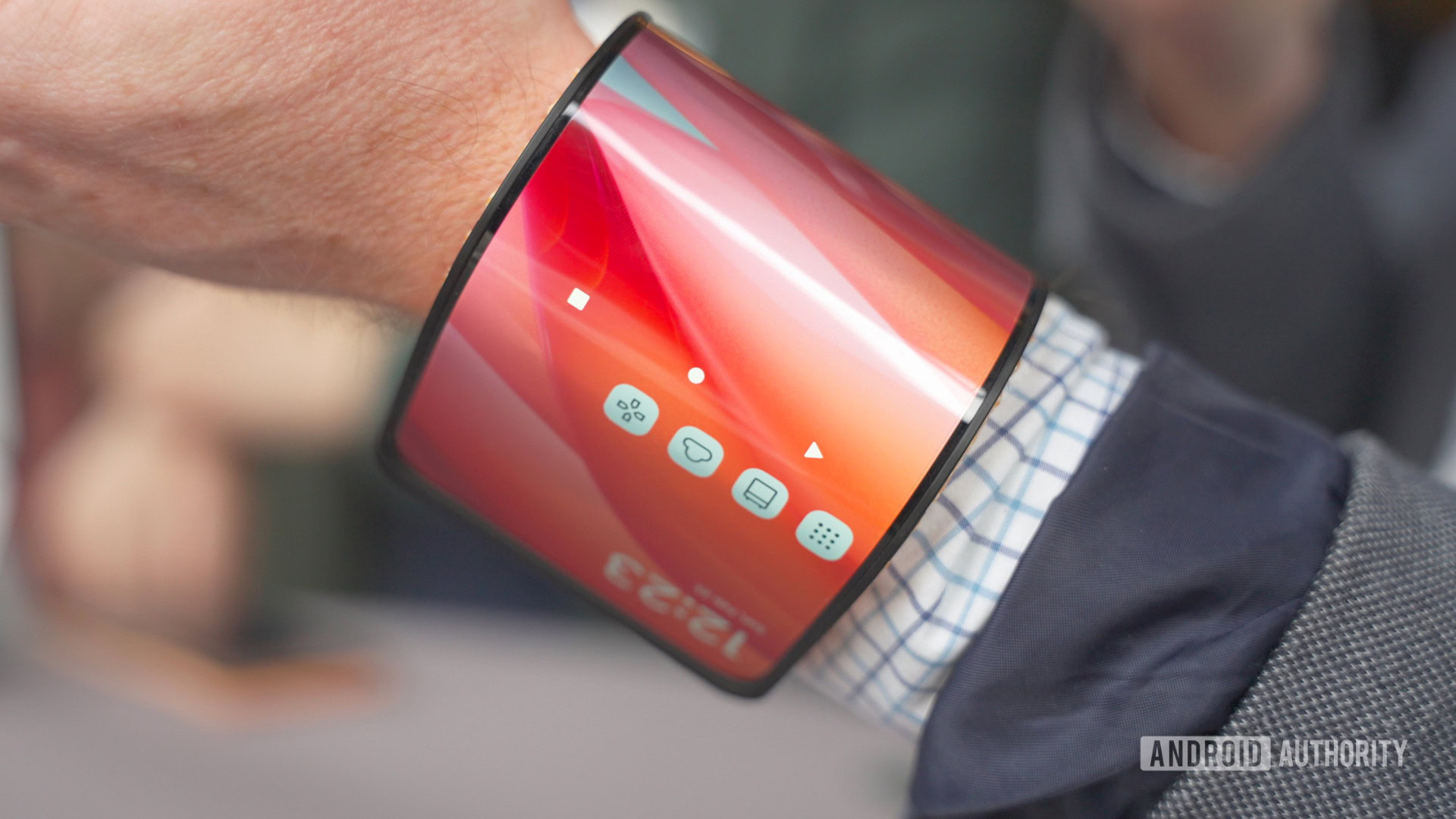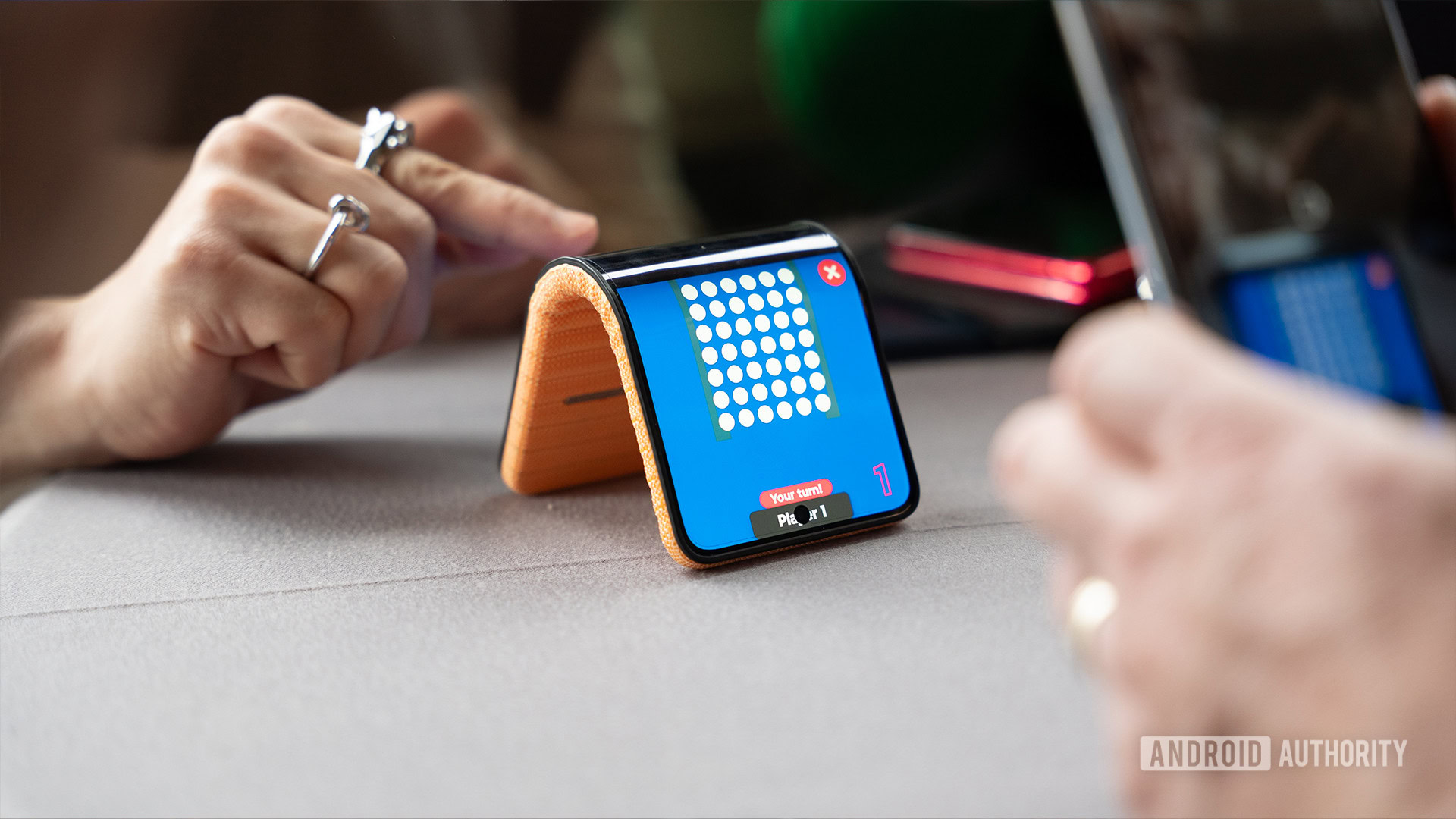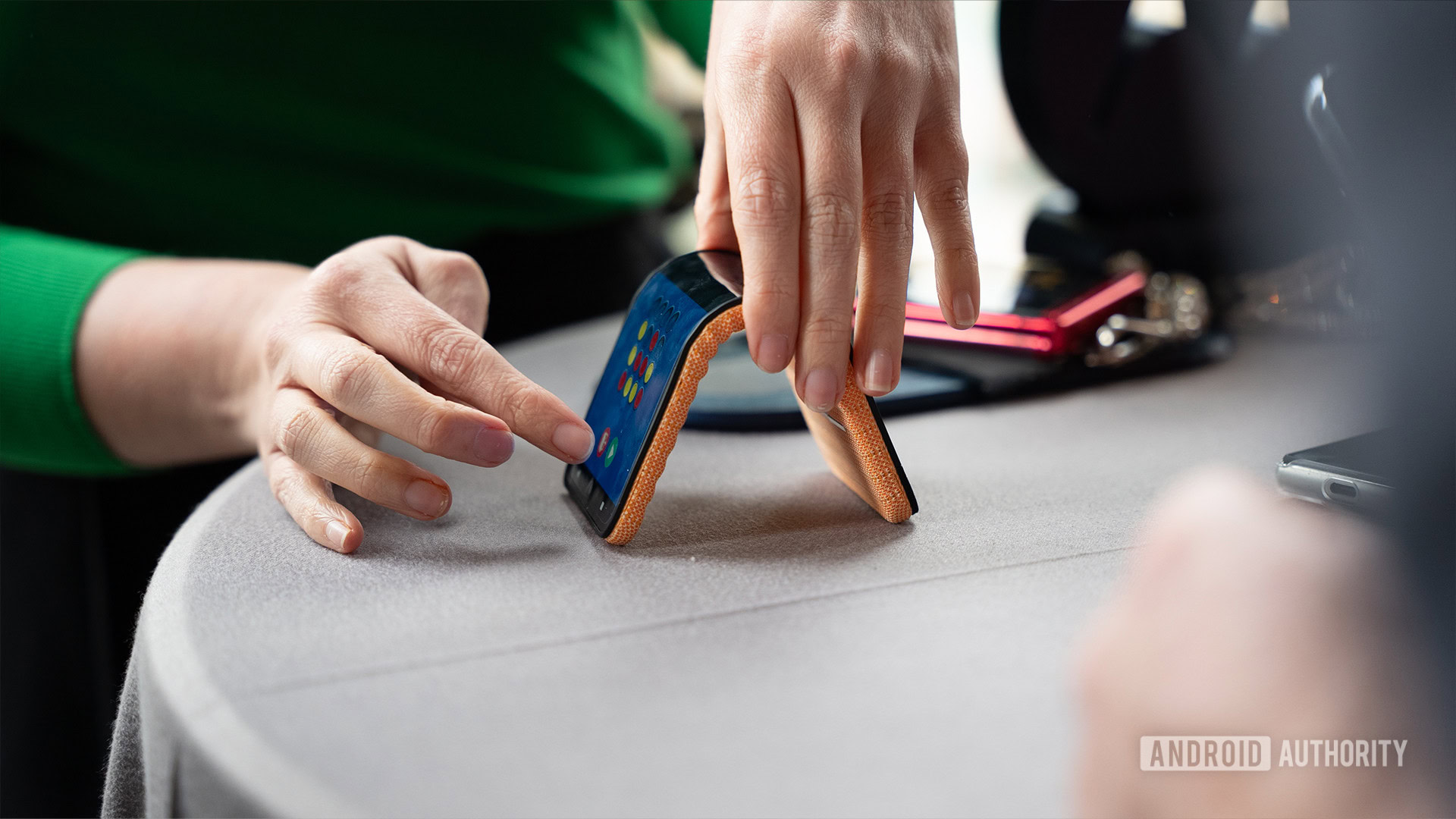Motorola thought people might want a phone that could be worn on their wrist. We don’t believe it.
The smartphone maker first unveiled the adaptive display concept in October last year, but we only saw a few press photos at the time. Now the concept has taken a small step closer to reality, and we can experience it for ourselves at MWC.
First, you should know that the sole purpose of the Adaptive Display concept is to demonstrate…well, a concept. From what Motorola tells us and what the actual device looks like, it’s clear that this is just a “what if” experiment and we shouldn’t expect to see it on the market anytime soon.
Because of this, we don’t actually have too many details about the product itself—the important thing is that it flexes around your wrist. Some of the details we have include the display size (6.9 inches) and the fact that the screen is a plastic-based pOLED.

Paul Jones/Android Authority
From the front, the device looks like a slightly elongated regular smartphone. It’s only when you turn things around that you realize something is different. Instead of a hard shell, the back is made up of multiple sections covered in a woven textile material that’s reminiscent of fitness equipment. The “soft” body is needed because the device needs to curve inward, so it can’t have a metal or plastic unibody like a typical phone.
Since the device contains multiple hinges, it can be bent into different shapes. You can make it into a small tent, which is convenient if you want to watch a small video. You can bend the bottom to make it stand upright. Or you can wear it on your wrist and turn it into a chunky smartwatch. The problem is that you need to put on a separate magnetic bracelet first so the device can stay put, otherwise it’ll be too loose.
The Motorola representative who demonstrated the adaptive display to us put it on her wrist, and she was able to shake and move her arm without issue. You can use the display in “watch mode,” but as far as we know, Motorola hasn’t created a special interface for this mode.

It’s clear that the Adaptive Display is too thick and stiff to really function as a smartwatch. So what’s the point of this whole exercise, you might ask? Who wants to wear a phone on their wrist? How much valuable interior space does the hinge assembly take up? How does a fabric-covered body handle water or sweat? There are a lot of questions that Motorola doesn’t even try to answer. But that’s the beauty of concepts – you can ignore the practical aspects and just focus on turning an ambitious idea into reality.
While in its current iteration, the adaptive display is too bulky, we can see how a more refined version could appeal to a certain demographic. For example, many people wear their smartphones on armbands while running, and it’s not a huge leap to imagine that they could wear them on their wrists.

Paul Jones/Android Authority
Motorola and its parent company Lenovo do have a history of revealing ambitious hardware concepts, and sometimes they actually become real products. Therefore, we are willing to draw exculpatory inferences about adaptive displays. Speaking of which, Lenovo has an equally wild concept at MWC 2024: a transparent screen laptop that looks like a sci-fi movie prop. Go check it out.